 https://media.airfactsjournal.com/wp-content/uploads/2013/09/06174255/AF-hudson-feature.jpg
280
520
Ben Conlin
https://media.airfactsjournal.com/wp-content/uploads/2024/09/03140241/AF_Logo_24.png
Ben Conlin2013-09-16 12:59:522015-10-13 13:38:05The moment I felt like a pilot: the Hudson River exclusion
https://media.airfactsjournal.com/wp-content/uploads/2013/09/06174255/AF-hudson-feature.jpg
280
520
Ben Conlin
https://media.airfactsjournal.com/wp-content/uploads/2024/09/03140241/AF_Logo_24.png
Ben Conlin2013-09-16 12:59:522015-10-13 13:38:05The moment I felt like a pilot: the Hudson River exclusionNEW ARTICLES
OUR MOST RECENT POSTS
Air Facts was first published in 1938 by Leighton Collins, dedicated to “the development of private air transportation.” It’s a different world now, and it’s a different Air Facts. Relaunched in 2011 as an online journal, Air Facts still champions, educates, informs and entertains pilots worldwide with real-world flying experiences. More…
 https://media.airfactsjournal.com/wp-content/uploads/2013/09/06174255/AF-hudson-feature.jpg
280
520
Ben Conlin
https://media.airfactsjournal.com/wp-content/uploads/2024/09/03140241/AF_Logo_24.png
Ben Conlin2013-09-16 12:59:522015-10-13 13:38:05The moment I felt like a pilot: the Hudson River exclusion
https://media.airfactsjournal.com/wp-content/uploads/2013/09/06174255/AF-hudson-feature.jpg
280
520
Ben Conlin
https://media.airfactsjournal.com/wp-content/uploads/2024/09/03140241/AF_Logo_24.png
Ben Conlin2013-09-16 12:59:522015-10-13 13:38:05The moment I felt like a pilot: the Hudson River exclusion
The Great Debate: do you have to have an instrument rating to travel by GA?
Debate"If you really want to use your license, better get an instrument rating." This is fairly common advice given to new pilots--the implication being that you can't really travel in a light general aviation airplane very effectively without an instrument rating. Is it really essential?

Oshkosh Odyssey – a 950 mile pilgrimage via seaplane
I was thereThroughout the yearlong building of my two-place, 100 hp SeaRey amphibian kitplane, I thought about flying it to the 2013 EAA Oshkosh event and landing at its Seaplane Base on nearby Lake Winnebago. This would be something of a pilgrimage.
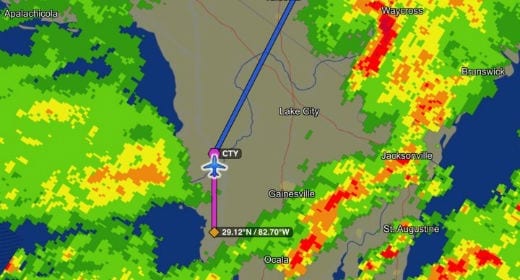
Thunderstorm flying in the age of datalink weather
Weather GeekDatalink radar or onboard radar? XM or ADS-B? Panel mount display or iPad? The options for receiving and viewing in-flight weather have never been greater, with a proliferation of affordable and capable avionics. Which one is best? And what's the right way to use each tool?

Go or No Go: storms in the panhandle?
Go or No GoAfter a productive day of meetings in Savannah, GA, (KSAV) your plan is to return home to New Orleans, LA (KNEW) tonight in time for dinner with your family. Here's the weather picture that greets you as you sit down at the FBO computer in Savannah. Read the details, then tell us if you're making the trip or spending the night.

One dream, one goal
Young PilotsThere is no history of pilots in my family. I always have to explain myself in a very detailed way to my family about what I want to do in the future. There are all of these pilots who have dads or moms who are pilots as well, but I am alone.
John’s Blog
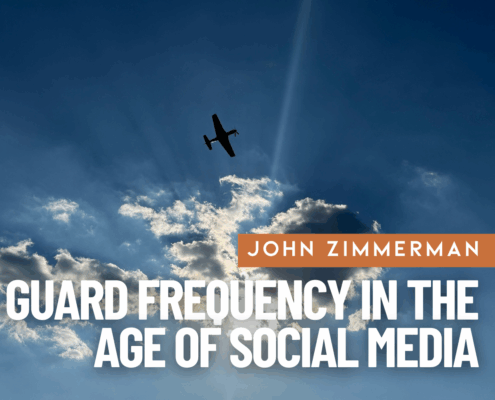
Guard frequency in the age of social media
John's blogYes, this is an “old man yells at cloud” article. Yes, I can already hear the jokes about the “guard police.” I don’t care. It needs to be said: Guard frequency (121.5) has become a national embarrassment, a sign that our self-absorbed social media culture has spread to the once-boring world of aviation. We need to do better.
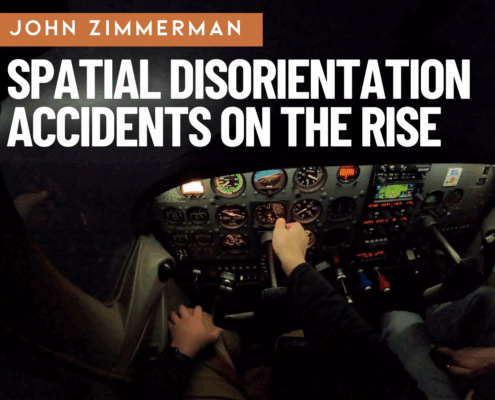
Why are spatial disorientation accidents on the rise?
John's blogResearchers from the FAA show that SD accidents have not declined since 2003—in fact, quite the opposite. You might assume the widespread adoption of tools like datalink weather, modern autopilots, reliable AHRS, and electronic flight bag apps would make VFR-into-IMC (the classic SD accident scenario) much less common. It’s a great theory, but the numbers don’t support it.

The aviation community is alive and well
John's blogBefore the expletive could even leave my mouth, one of the FBO employees offered to lend me the crew car. I assumed the crew car option would be impossible, or at least impossibly bad manners, since the round trip would be nearly two hours and the FBO was closing soon. But he wouldn’t hear it: “take all the time you need and just drop the keys off with the night security guard. We appreciate your business.”
I Can’t Believe I Did That
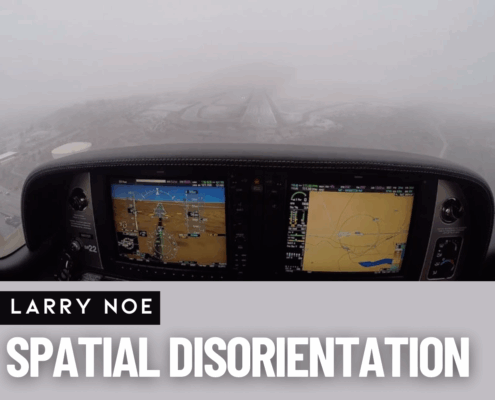
Spatial Disorientation: I Thought It Couldn’t Happen to Me
I Can't Believe I Did ThatI began climbing to get between layers, intending to stabilize and then request IFR. But as I entered the clouds, what I thought could never happen did. I was in an unusual attitude: 45 degrees banked and nose down. For a moment, I considered pulling the CAPS parachute. I had often wondered if I’d have the presence of mind to use it in a real emergency. After this, I know the answer is yes. But I also realized I could recover.
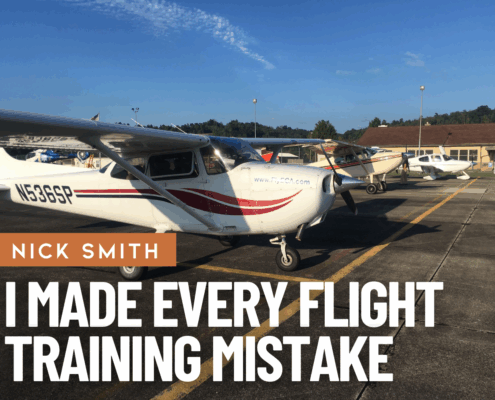
I Made Every Flight Training Mistake Humanly Possible
I Can't Believe I Did ThatFlight training is rarely a straight line, but for Nick Smith it turned into a winding, four–year journey full of delays, false starts, and unexpected costs. In this brutally honest account, he shares the mistakes he made—so future pilots don’t have to repeat them. His story is both a cautionary tale and a reminder that perseverance can still lead to the certificate.

A Quarter Tank and a Prayer
I Can't Believe I Did ThatI was watching the fuel gauges drop before my eyes. I elected to continue to ECG rather than turn back. I was on a direct course. The Norfolk controller wished me luck—not the most reassuring sign—and handed me off to ECG Tower, who had already been briefed.
Opinion
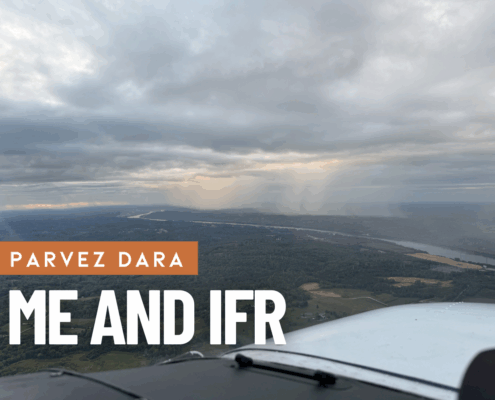
Me and IFR
OpinionDuring another smooth cloudy day, a relative—who shall remain unnamed—asked if I wanted to fly. Weather was marginal VFR; he had his IFR rating. At 3,000 feet, we entered clouds. I panicked briefly, deer-in-headlights style. Calmly, he asked me to hand him his foggles from the seat pocket. Did that give me confidence? Not really. But the flight remained calm and uneventful. He wore view limiters in clouds for comfort—something I couldn’t quite fathom at the time.

Yes, I Still Take Flying Lessons
OpinionI approach every flight with an instructor with a plan of my own. I don’t just show up because the calendar says it’s time. I bring specific goals, real-world questions, and skills I want to sharpen. My annual IPC isn’t about checking FAA boxes; it’s about tackling challenges I’ve faced over the year and flying approaches that have pushed me.

Generally Affordable? The Truth About Flying Costs
OpinionThe economics of flying is not for the faint of heart. In fact, the average cost of just getting your “license to learn” is now hovering around the $20,000 mark. And if that number doesn’t faze you, then let me sprinkle in some rampant inflation, a tight insurance market, and just the high opportunity cost of staying current—let alone proficient—into the mix.
More Articles
Recent Posts
Email newsletter
Write for us!
Did you know that most of the articles at Air Facts are written by readers like you? You do not have to be Richard Collins or Ernest Gann – simply a GA pilot with a story you’d share with friends sitting in the hangar.
